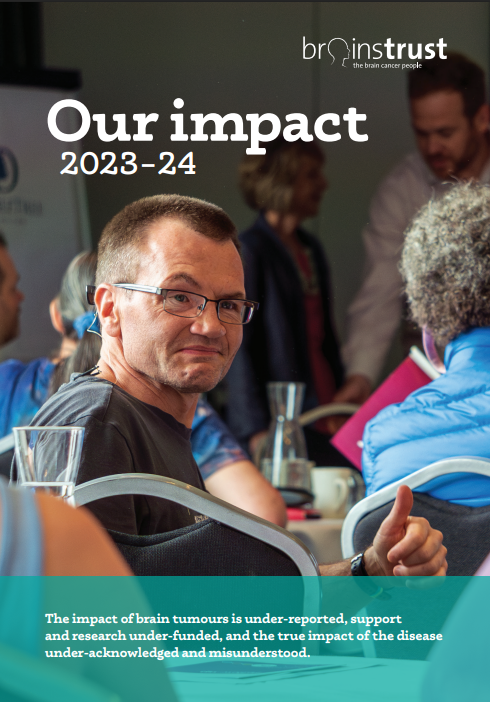
Returning to the stage
Later this month, Tim Wormley-Healing returns to the stage with his brand new band, 20YardsBehind! Tim was diagnosed with a brain tumour in September 2019, just as the band were getting ready to perform their first ever gig. Tim’s sudden diagnosis left him needing surgery, radiotherapy and chemotherapy – an inspirational story which he shares below.
Determined to do what he loves most, Tim got back behind the mic in December and the band are now preparing for their spectacular charity concert in aid of brainstrust.
Tim and his band, 20YardsBehind! have offered an open invitation to anyone who would like to attend what we’re certain will be an incredible charity concert later this month.
A date for your diary
- Date: Sunday 23rd February 2020
- Time: 3.30pm onwards
- Location: Bexhill Rowing Social Club, Bexhill-on-Sea, TN40 1JU
- Price: FREE *voluntary donation to raise funds for brainstrust
Tim’s Story
I’m 59 (60 in July) and live in Bexhill-on-Sea, East Sussex. I’ve been married to Viv for 38 years and we have 2 grown up daughters, Charlotte and Ella as well as a 5 year old grand daughter Alexa.
On Thursday 5th September 2019 I was at work at my office in Lewes. I had no warning signs such as headaches or dizziness when, without warning, at 4pm I had a massive seizure. This caused me to fall backwards and I struck my head heavily on a cupboard as I fell, knocking myself out. The fantastic people I work with went into action. They made sure I was safe and called and ambulance. They then called Viv to alert her to the problem.
The ambulance arrived quickly and whisked me off to The Royal Sussex County Hospital in Brighton. I had come to by then and was complaining of head and neck pain. I was immediately sent for a CT scan. The scan showed that in falling I had cracked a vertebrae in my neck. It also show a lump in my right temporal lobe and I was referred immediately to a neuro-surgeon.
By this time Viv had arrived at the hospital and was shortly joined by my daughter Charlotte who had hightailed it down from London where she lives and works. The two of them stayed in Brighton for the next few days whilst the story unfolded.
The next thing I remember is [my surgeon] sitting by my bed in ICU and telling us that I had a 3cm tumour in my brain and he needed to operate as soon as possible. We went through the detail and consent forms and he operated on Monday 9th September. It took 5 hours but we were told afterwards that the operation had been very successful and the bulk of the tumour had been removed. The bad news was that the tumour was a Grade 4 Glioblastoma Multiforme and that it was almost certain that some small tendrils would not have been removed by the operation and I would need to go through several months of radio and chemotherapy. I recovered very quickly from the surgery and was deemed fit enough to go home on Thursday 12th September.
A few weeks later Viv and I went to meet my Oncologist who was very stark in her description of the treatment and the probable side effects as well as the fact that despite any treatment the prognosis for this type of tumour was very poor. On average people only last 12 to 24 months! This was not dressed up in any way and knocked us both sideways as there seemed to be very little hope.
However, I am an optimist and refuse to be a statistic or average. I have been through the 6 weeks of radio/chemotherapy and coped very well. I am now on the 4 weekly cycles of home based chemo therapy and continue to do well. My last MRI scan showed no visible signs of regrowth. I have had no more seizures and not one single headache since this all started.
What’s more we have decided that life is for living and we must continue to enjoy doing the things we’ve always done. This isn’t hiding from the reality of potential outcomes, it’s ensuring we get the best out of every day we have. This includes Viv continuing with her tap dancing and me getting back together with the guys in 20YardsBehind!












